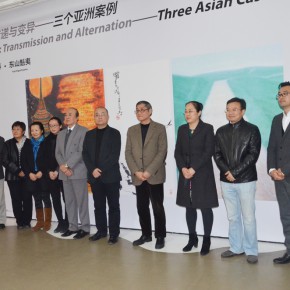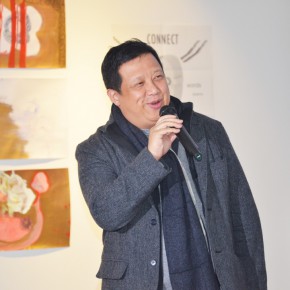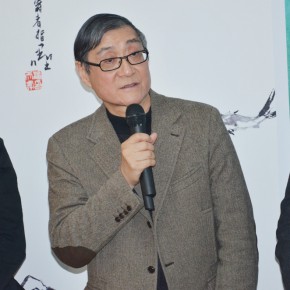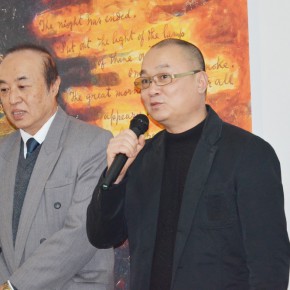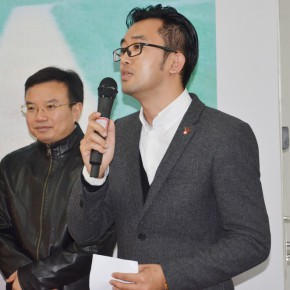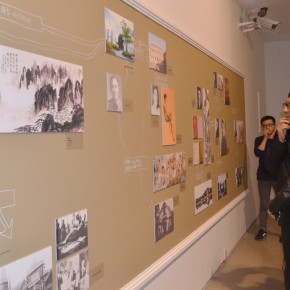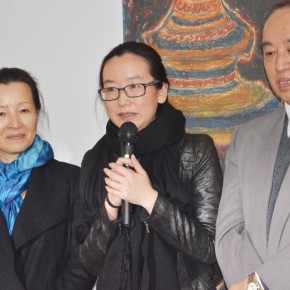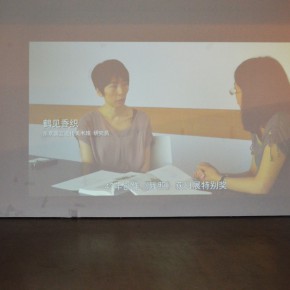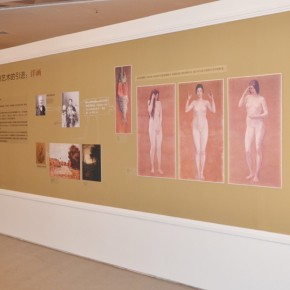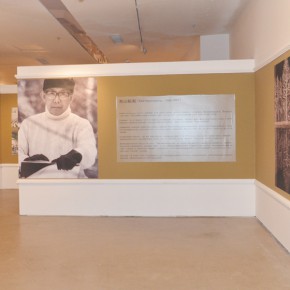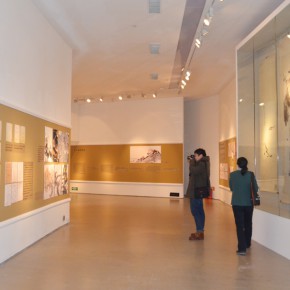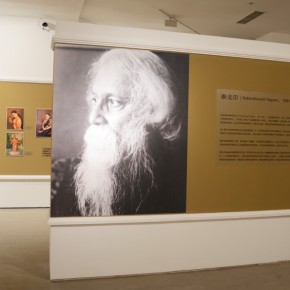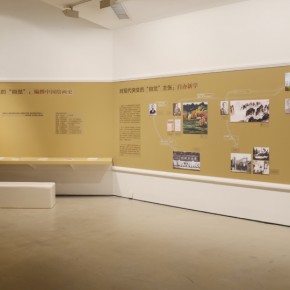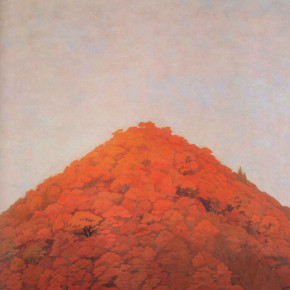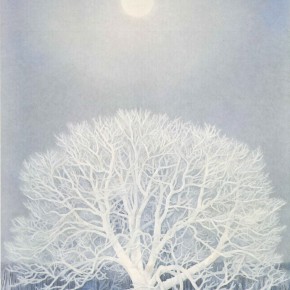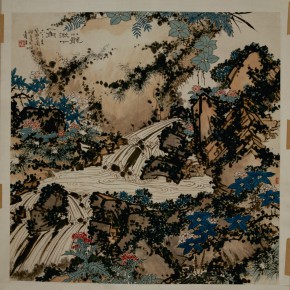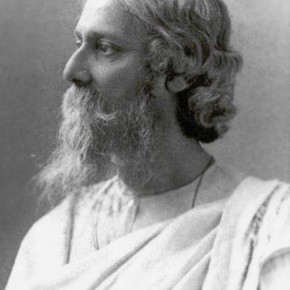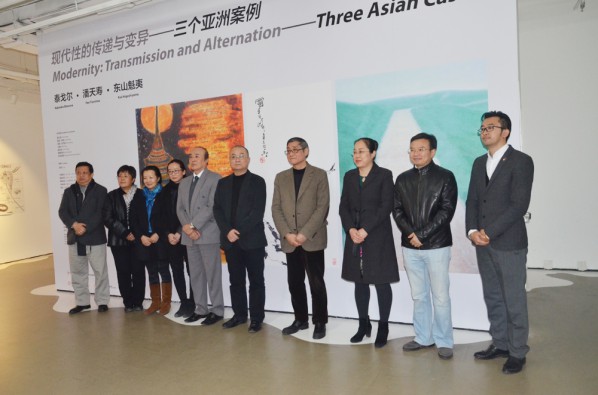
On the afternoon of November 19, 2014, “Modernity: Transmission and Alternation Three Asian Cases” documenta opened at Hall 2 of Today Art Museum. The exhibition is part of the joint research project MGA (Modernization, Globalization, Art) between CAFA(Central Academy of Fine Arts) and ZKM (Center for Art and Media Technologies). The exhibition focuses on three cultural icons in the Modernization process in Asia — Rabinaranath Tagore from India, Pan Tianshou from China, Kaii Higashiyama from Japan, to explore how Modernity is transmitted, reacted to and altered when it was initially introduced into these Asian countries, through a study of their inspiration from local cultures, reflections on Western Modernity and judgments on the Modernization of their own traditions.
The opening ceremony was held at 3:00 pm. Curator Xu Jia, An Yuanyuan and Xie Xiaofan, Deputy Directors of National Art Museum of China, Liu Yongmei, Deputy Director of the Ministry of Culture, Exhibition Academic Advisor Pan Gongkai, Wang Yong, a researcher of China National Academy of Arts, Yu Ding, Deputy Dean of the School of Humanities, CAFA, Peng Feng, Professor of Peking University, a famous curator, Gao Peng, Director of Today Art Museum attended the opening ceremony, and gave a speech. In addition, Su Xinping, Vice President of CAFA also attended and visited the exhibition.
Wang Yong addressed the opening ceremony stating that, modernity was the focus of contemporary academia, and it offered a similar clue for the succession of Western modernity in Eastern countries. This exhibition selects three artists from the representatives during the transformation from tradition to modernity — Rabinaranath Tagore, Pan Tianshou, Kaii Higashiyama who are typical artists and their unique experiences of the exploration of oriental art greatly inspired contemporary art.
Pan Gongkai initially introduced the background of the exhibition. When he had a communication from the Western art history expert Hans Belting two years ago, they both agreed to establish a research program on contemporary art and globalization. After many discussions they reached a consensus: In order to study the diverse cultural art forms in current and future globalization, we must first review and comb through the history, which primarily focused on the problem of artistic transformation of developing countries. Pan Gongkai said that the current research in this field was weak throughout the world. Although the research on modernity was the first major topic of Western liberal art circles after the 1950s, almost all modernism thinkers are involved in the issues of modernity, but they are part of the research on developed countries, while other countries were rarely concerned. Professor Pan Gongkai said, “The problem of developing countries is that they require the countries themselves to study and find solutions, which is the reason why it take the issue of “Road of Chinese Modern Art”. He said that the exhibition presented the tough restructuring road that Asian countries faced with the influence of Western modernity, and this exhibition is the first stop to show the results of this topic from which the exhibition will continue.
After the end of the opening ceremony, the exhibition curator Xu Jia guided the guests to visit the exhibition. The exhibition selects the essential era of Western culture that was introduced into the East in the 19thcentury going through to the 20th century, through a large number of historical facts as well as cultural studies, by means of case studies and relevant historical analysis, to discover and analyze the origin of the art form of current “global contemporary” art in the process of addressing transmutation of Asian modernity.
According to Xu Jia’s presentation, the exhibition is divided into three exhibition halls by age, a detailed study of the cases of the three artists. The three exhibition halls are connected by a common clue – rather than paying close attention to how they studied painting or their artistic styles, it thoroughly combed through the creation of the artists to focus on a common problem, namely in the late 19th and early 20th century, how the developed Western modernity was introduced into the East under the background of the rise of the West and the decline of the East. Although the incoming ways were different, after it was introduced, the reaction, interaction with the West, the measures taken by them, etc. were different and these Asian countries were faced with a same problem - how to deal with Western modernity. In the case of Kaii Higashiyama, we may see how the Japanese Painting, which may not seem directly relevant to Western Modernism art, was closely intermingled with the transmission of Western Modernity into a Japanese context in late 19th and early 20th century, and how this Japanese Painting format emerged as a complicated reaction between Modernity and local traditions. In India, Rabinaranath Tagore acknowledged both Indian tradition and Western Modern culture in a more profound way through a comparison with his Indian colleagues. Therefore he can hardly satisfy the Indian art practices during his period—it was either a rigid mimic of Victorian Art or mincemeat play of Oriental patterns. He takes a radical way and abandons all his cultural ancestors to activate Indian art. Chinese artist Pan Tianshou was originally optimistic in the hybrid of Chinese and Western cultures. However, with happenings of “Chinese Painting Department Cancelled” and “Chinese Painting renamed as Color Ink”, he realized the Self-elimination of Chinese painting as a possible result of this hybrid. Thus he has adjusted his proposition to “Keep a Distance between Chinese and Western Paintings”, as a way to reflect and re-balance the dominant attitude of Complete Westernization and Complete Hybrid at his time.
The exhibition showcases 6 original works of Pan Tianshou’s masterpieces, lasting from November 18to December 27, 2014.
Text and Photo by Lin Jiabin/CAFA ART INFO
Translated by Chen Peihua and edited by Sue/CAFA ART INFO


